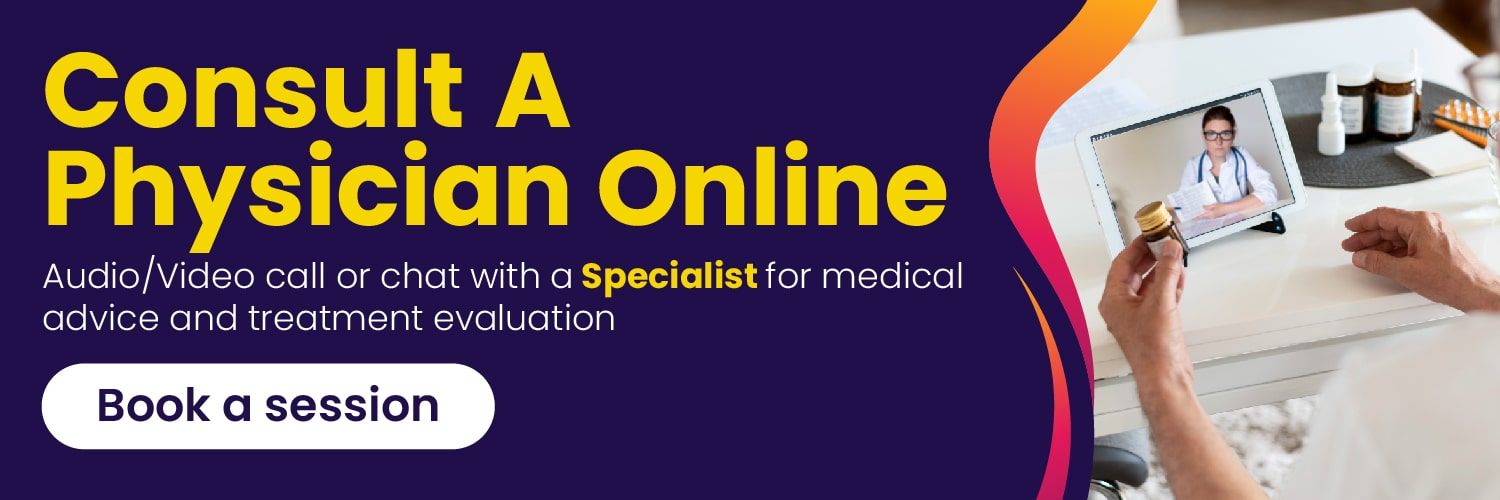Why Are Your Muscles Twitching After a Workout?
- 14 months ago
Getting active and exercising is a fantastic way to stay healthy and feel good. But have you ever noticed your muscles doing little twitches after a workout? There could be a reason why your muscles feel like they're moving after exercise.
The fitness journey can be rewarding and challenging, and it's not uncommon to experience various sensations and reactions from your body along the way. One such phenomenon that often raises concern is muscle twitching after a workout. While these involuntary contractions may seem alarming, they are usually harmless and can be attributed to various factors.
What Are Muscle Twitches?
Muscle twitches are when small muscle fibers contract on their own. It can make your muscles move slightly without you trying to move them. These twitches are usually seen in your eyelids, thighs, or calves. They are harmless and can happen for various reasons.
It can be because of things like being tired, stressed, dehydrated, or having imbalances in certain chemicals in your body. Most of the time, these don't last long and go away without needing medical help.
It's essential to know the difference between muscle twitches and more serious issues like muscle spasms or cramps. Knowing these distinctions can help you understand and deal with any unexpected muscle movements you might experience.

What is the Difference Between Muscle Twitches, Spasms, and Cramps?
Understanding the distinctions between muscle twitches, spasms, and cramps is crucial for interpreting and addressing these involuntary muscle movements.
1. Muscle Twitches: Small, rapid contractions of a few muscle fibers.
- Duration: Generally brief, lasting only a few seconds.
- Causes: Fatigue, stress, dehydration, or certain medications.
- Management: Adequate hydration, rest, and addressing underlying causes.
2. Muscle Spasms: Involuntary contractions of an entire muscle or a group of muscles.
- Duration: Can last longer than twitches, ranging from seconds to minutes.
- Causes: Overuse, muscle fatigue, dehydration, or electrolyte imbalances.
- Management: Stretching, massage, hydration, and addressing contributing factors.
3. Muscle Cramps: Painful, involuntary contractions of a muscle or muscle group.
- Duration: Typically more prolonged than spasms and can cause significant discomfort.
- Causes: Dehydration, electrolyte imbalances, overuse, or underlying medical conditions.
- Management: Stretching, massage, hydration, and addressing underlying causes.
It's important to note that while muscle twitches, spasms, and cramps share some common causes, each has its distinct characteristics and management strategies. In many cases, these involuntary muscle movements are due to lifestyle factors and can be addressed with simple adjustments to one's routine.
Causes of Muscle Twitching After a Workout
Dehydration and Electrolyte Imbalance
One of the primary culprits behind muscle twitching after a workout is dehydration and electrolyte imbalance. When you exercise, your body loses fluids through sweat, and along with the sweat, essential electrolytes such as sodium, potassium, calcium, and magnesium are also expelled. These electrolytes play a crucial role in muscle contraction and nerve function. A deficit in any of them can lead to muscle twitches and spasms.
Overexertion and Fatigue
Pushing your body beyond its limits during a workout can result in muscle fatigue and overexertion. This exhaustion can lead to involuntary muscle contractions or twitches as a sign that your muscles need time to recover.
Inadequate Warm-Up and Cool Down
Skipping warm-up and cool-down exercises can increase the likelihood of muscle twitches. Proper warm-up prepares your muscles for the upcoming activity, while a cool-down helps prevent stiffness and aids in the removal of metabolic waste products.
Nutrient Deficiency
Nutrient deficiencies, particularly in minerals like magnesium and calcium, can contribute to muscle twitching. These minerals play a vital role in muscle contraction and relaxation, and a shortage can lead to involuntary muscle movements.
Also Read: Which Protein Is Best For Muscle Health?
Stress and Anxiety
High stress levels and anxiety can manifest physically, leading to muscle twitches. When you are stressed, your body releases cortisol, a stress hormone that can affect muscle function.
Caffeine and Stimulant Intake
Excessive consumption of caffeine or stimulants before a workout can contribute to muscle twitches. These substances can overstimulate the nervous system, leading to involuntary muscle contractions.

Preventing Muscle Twitching After a Workout
Muscle twitching post-exercise can be minimized with simple yet effective preventive measures. Incorporate these practices into your routine to enhance your workout experience and reduce the likelihood of post-exercise muscle twitches.
Stay Hydrated
- Stay well-hydrated throughout your workout to combat dehydration-induced twitches.
- Consider electrolyte-rich beverages, especially during intense sessions.
Take Breaks
- Incorporate short breaks during intense workouts to allow muscles to recover.
- Pacing yourself can prevent muscle fatigue and twitching.
Consider a Massage
- Regular massages can promote muscle relaxation and reduce tension.
- Professional or self-massage techniques can aid in muscle recovery.
Stretch After Exercise
- Include a comprehensive stretching routine post-workout to enhance flexibility.
- Focus on major muscle groups to prevent stiffness and twitching.
Gradually Increase Intensity
- Progressively challenge your body by gradually increasing workout intensity.
- Sudden spikes in intensity can lead to muscle fatigue and twitching.
Conclusion
While muscle twitching after a workout can be unsettling, it's often a benign and temporary phenomenon. By understanding the various factors that contribute to these twitches, individuals can take proactive measures to prevent and alleviate discomfort. Prioritizing hydration, maintaining a balanced diet, incorporating proper warm-up and cool-down routines, managing stress, and seeking professional advice if needed are steps toward a healthier and more enjoyable exercise experience.









